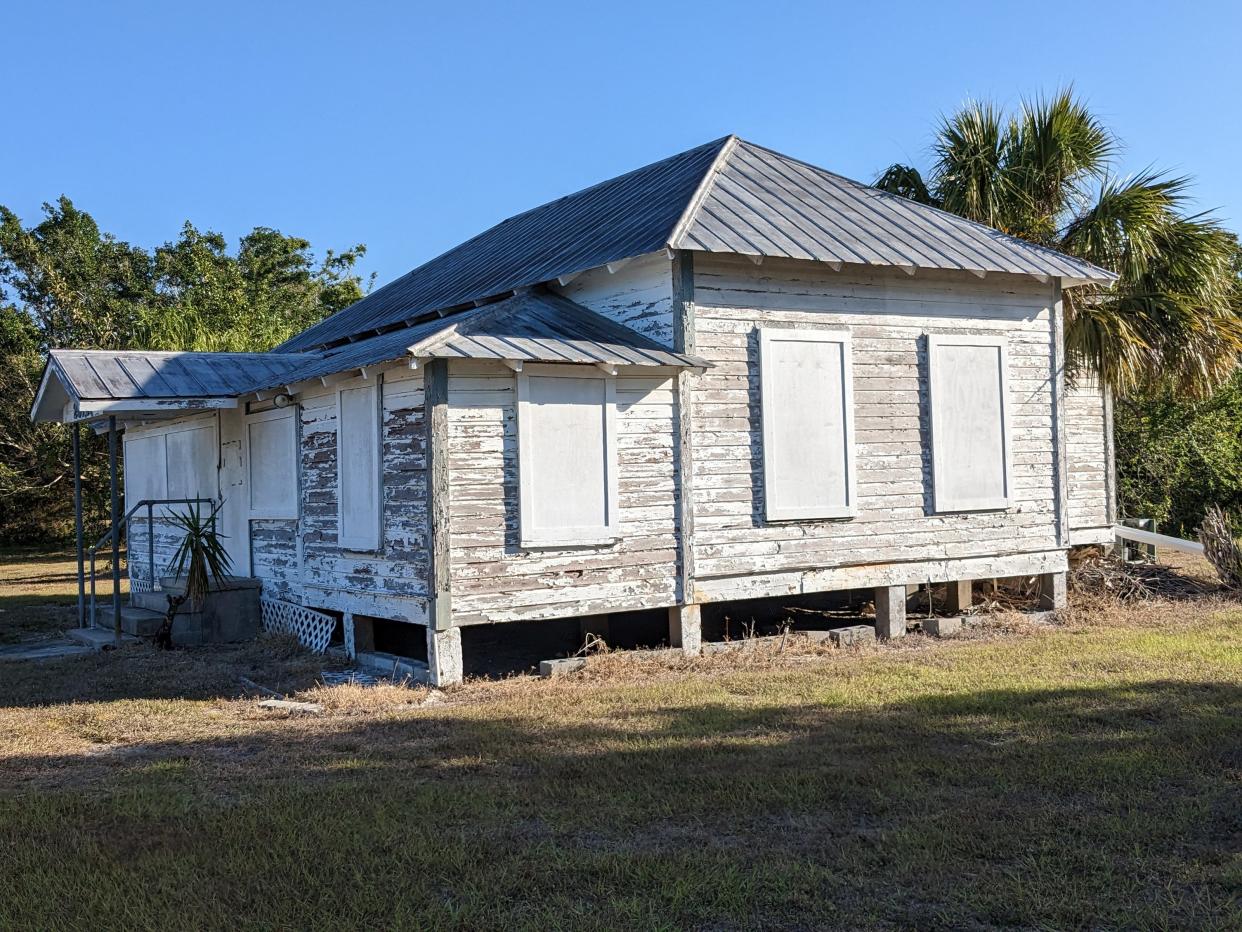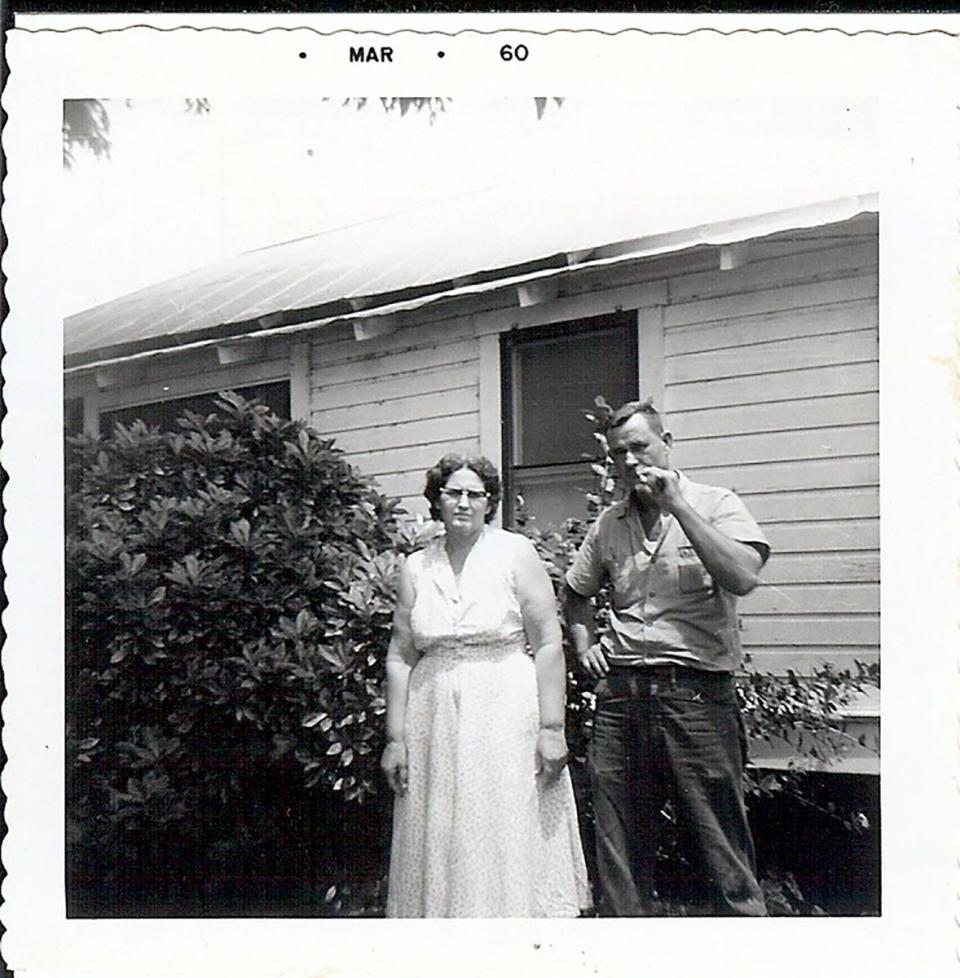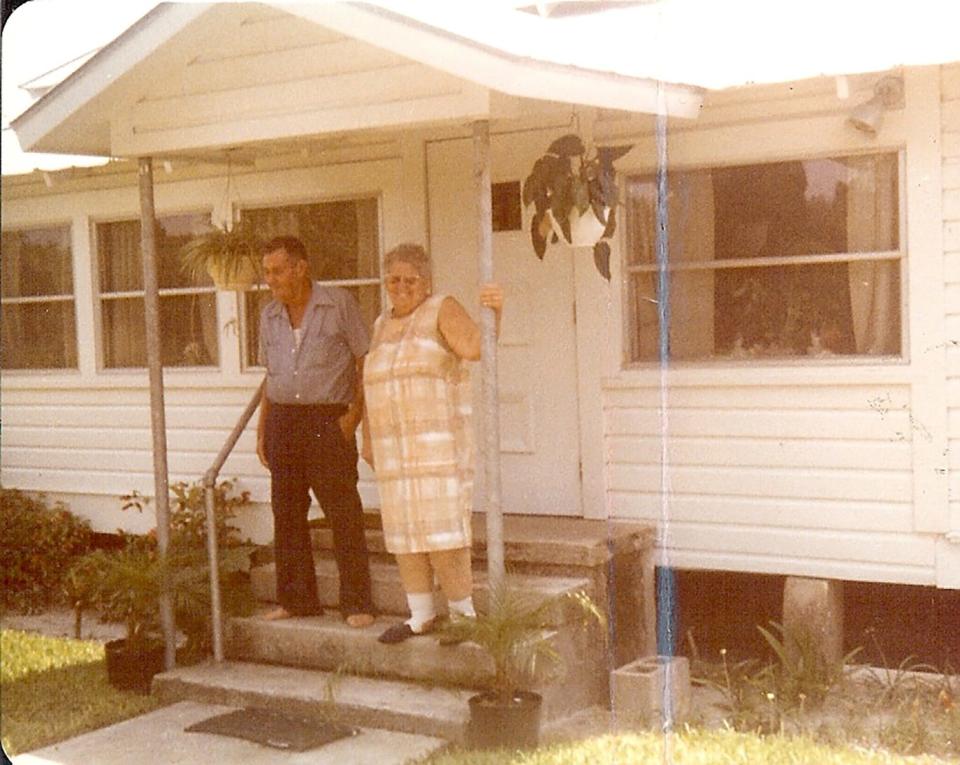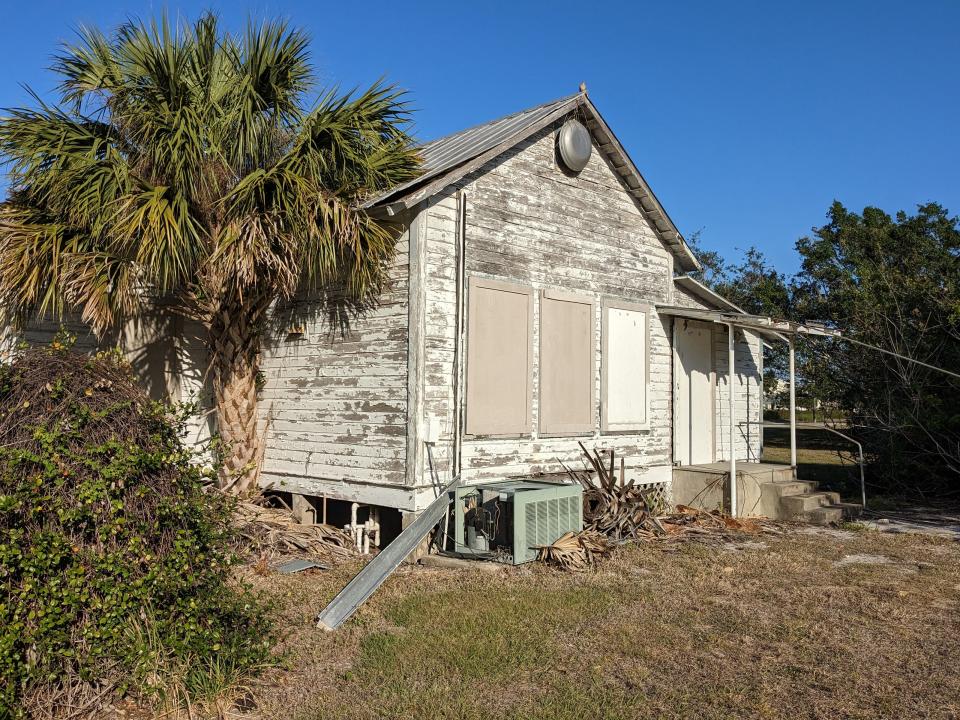Estero Historical Society working to save 1919 home

The Estero Historical Society is racing to save a home built in 1919, just a week after the Estero Village Council voted to demolish a 1910 home. Both houses are on land that the Village purchased in 2019.
“We’ve got to get it off of here,” stressed Gail Langner, president of the Estero Historical Society. “I know one thing. We don’t want it torn down.”
As the village makes plans for walking trails and other activities on the land it now owns, they have no need for the run-down houses. In February, councilmembers unanimously voted to demolish the 1910 home after it was inspected by the Village which declared it structurally unsound. It had additional damage due to Hurricane Ian. Although it was built in 1910, a cultural resource assessment determined that the structure was not considered historically significant. Steve Sarkozy, city manager, said it would cost $50,000 to demolish, but hundreds of thousands to repair.
MOREEstero considers new rules for raised homes
ANDWith decision, 16-year struggle over Bonita property is resolved
ALSOSusan Bridges retires from Centers for the Arts Bonita Springs
“We didn’t want it destroyed, but it needed a lot. It needed a whole new roof and it did have mold.” Langner said. “It would have had to be ADA compliant and it couldn't be because it had a wonky floor plan. It would have needed an elevator. It had a narrow dirt path. We would have had to raise the money and get grants, and we just couldn’t do it. We are a small historical society. It just wasn’t going to be feasible.”
So now the focus is on saving the other old boarded up home with its peeling white paint that sits on short stilts on a grassy lot off Highlands Avenue in Estero. The home was built by the Joaquin “King” Alvarez from Spain and his wife Anna Jane Fernandez, of Portugal. The couple met and married on Mound Key in 1907 and built the home in Estero about 12 years later.

“It was a thriving place,” Langner described. “There were citrus groves all around here. This was the place things happened. It was a gathering place. There was a lot of community here.”
Jeff McCullers is a descent of “King” and Anna and describes his family and the home. The Alvarez’s had five children and when Anna died of kidney cancer in 1931 at the age of 37, her young daughter Della had to quit school and take charge of the household with her father and four brothers. King Alvarez grew and picked citrus on the family farm by the house. When “King” died in 1944 from an injury sustained while working in the groves, Della and her husband Hugh Smith took over, working those groves for more than 40 years. At one time the property had several structures including a packing house, fruit stand, large barn, greenhouse, wash shed, cabin and outhouses. The home had a large rain cistern that supplied water for drinking and cooking. There were two large chicken pens, a vineyard, an enormous vegetable garden and the groves with trees that grew not only oranges, but kumquats, tangerines, guava, lychees, mangoes, jaboticabas, loquats, castors, calamondins, carambolas, Surinam cherries, and papayas.
Della and Hugh’s daughter, Kay, is Jeff McCullers mother so Jeff has fond memories of that home.
“Throughout all of those 40 seasons, the Alvarez-Smith house was the home for what became quite a large family,” McCullers recalled. “Huge feasts were held there for every holiday with cars parked all up and down Highlands. Many wedding and funeral receptions were also hosted there. Even when it wasn’t a special occasion, the front porch was a popular gathering place for everyone who lived on the street, and even plenty who lived father away. Neighbors were welcome to stay as long as they liked but were often put to work shelling peas while they chatted.”

Now there is just silence. The groves and other buildings are gone. The house needs floor repairs and a coat of paint. It also needs to be moved to a new location.
Estero mayor Katy Errington said the Village has not yet determined what they want to do with the land on the north side of the river. Trails for public use will open eventually on the south side. But whatever they do, the house does not fit into their plans so they want it gone.
“The Village is not in a position to take care of older houses,” Errington said.
She said the Village will most likely give the house to the historical society so they can decide its future. She is not sure if the Village would help with any plans for the house.
“It depends on what they come up with,” Errington explained. “I am all for preserving history if it is worthwhile. It has to be more than a house built in 1919, otherwise it is just an old house. If it is just an old house, we don’t need a burden like that. Someone has to come up with a reason why it should be saved.”
Jacob Winge, a longtime history buff, historical re-enactor and a descendant of local pioneers, has many reasons why it should be saved.

“I think people want to understand more about this really unique place we call home,” Winge said. “I am really hoping this initiative to save this home will really galvanize the community.”
Winge said people need to see history beyond things behind glass in a museum and beyond what they might read in a book. They need to see re-enactments and be able to walk through history in places such as historic homes.
“It has to be immersive,” Winge said. “People love things that are immersive. Maybe we can engage the business community, but at the end of the day people have to invest in and buy into saving history. If we preserve history and we save something like a jacket or a hat or a pin or a building and we just put it in a box, and say ok we saved it, eventually people are going to lose that vested interest in that item or that location.”
Winge said it is similar to saving the environment. If the state buys land for conservation but doesn’t put in trails and let the public use that land, then they don’t really understand how their taxes benefit them. That’s why he wants to save the house and open it to the public as an information or welcome center.
But saving the house will be costly. It can cost more than $100,000 just to move the home to a new location. Then it needs extensive floor repairs and other renovations.
“I am still hopeful that this inspires some community leaders to help save this part of history,” Winge said. “Once we lose it, it is gone forever. If we don’t save these things that are so important to history then we lose elements of our own identity. In this modern age what we lose is going to be lost, and the only way we will get to see things is behind the glass in a museum. We have to keep it alive. That is my big thing. I hope over the next few months we can really galvanize the community to step up and be involved in it.”
This article originally appeared on Naples Daily News: Estero Historical Society working to save 1919 home

